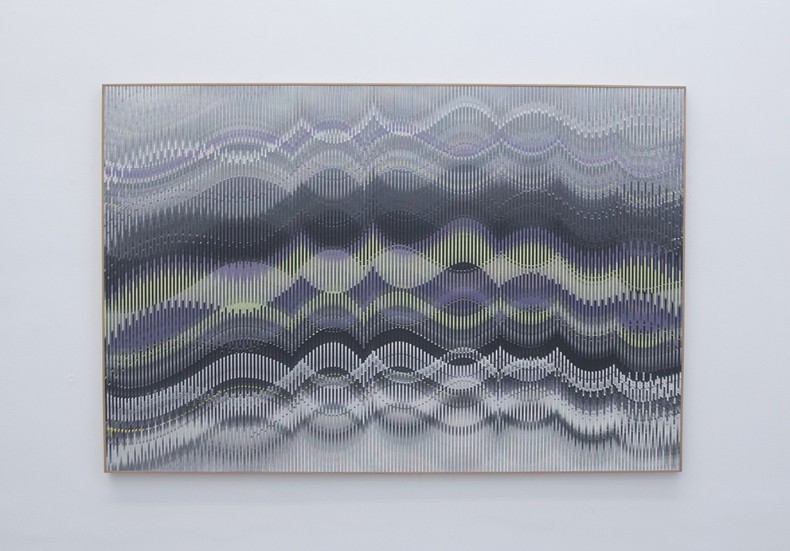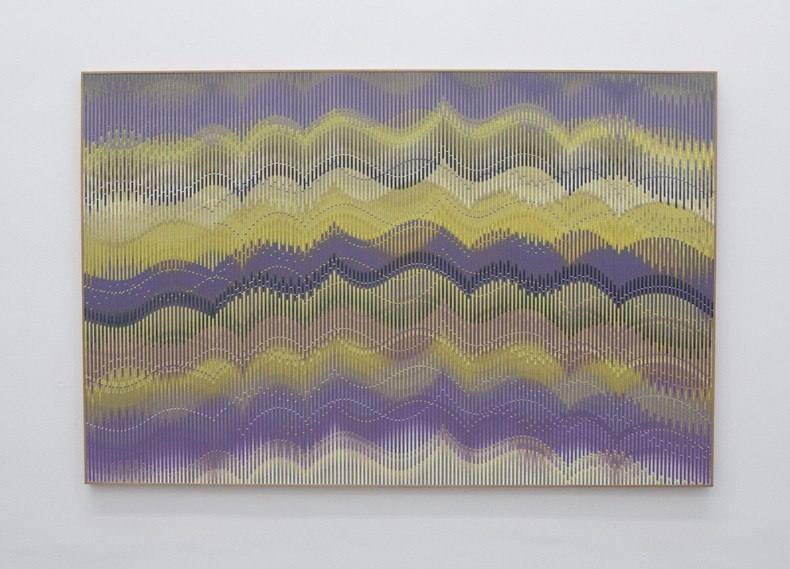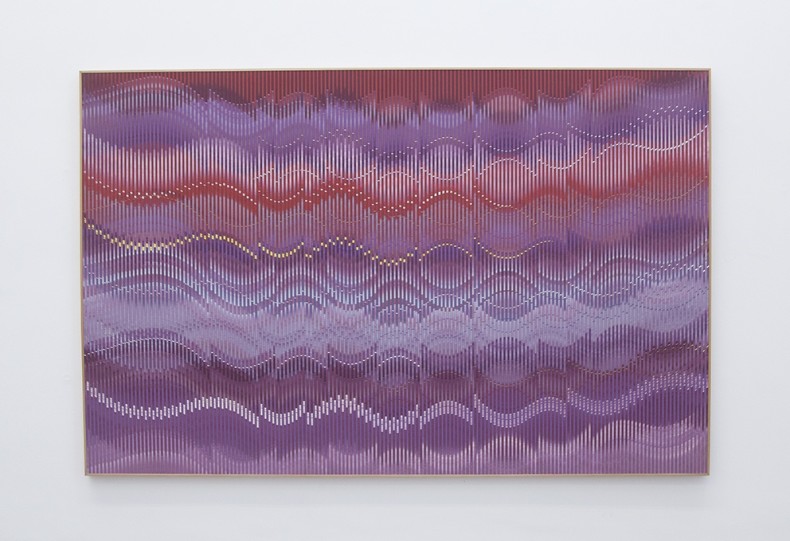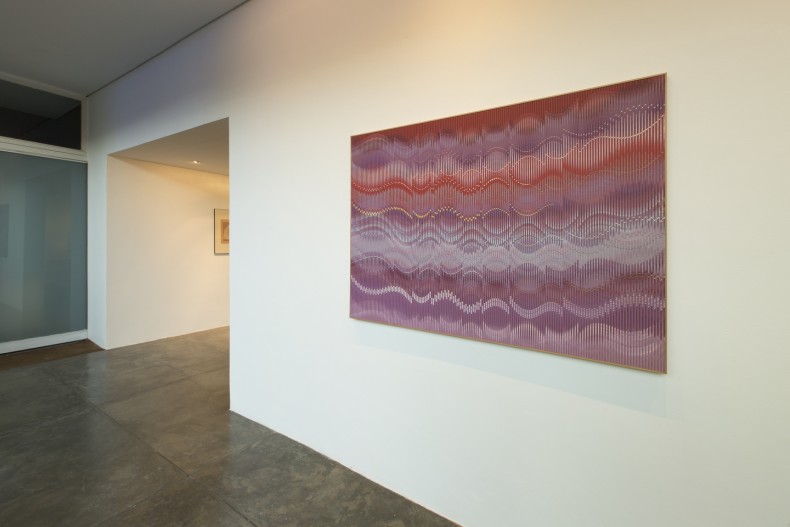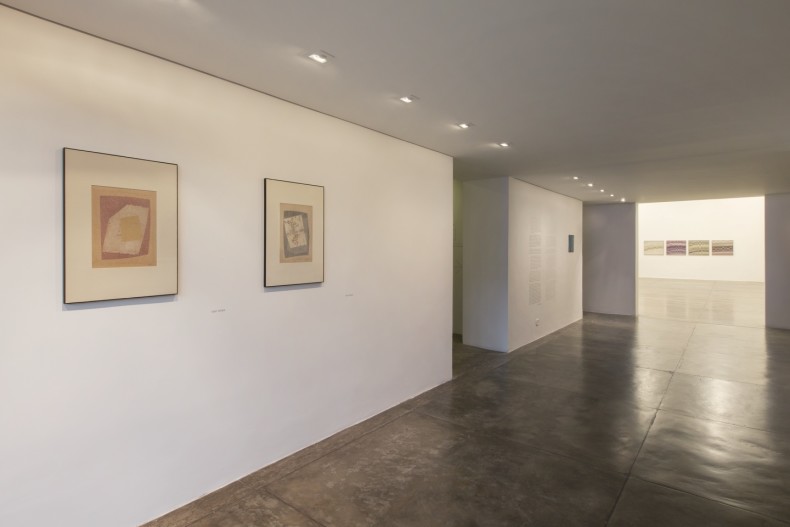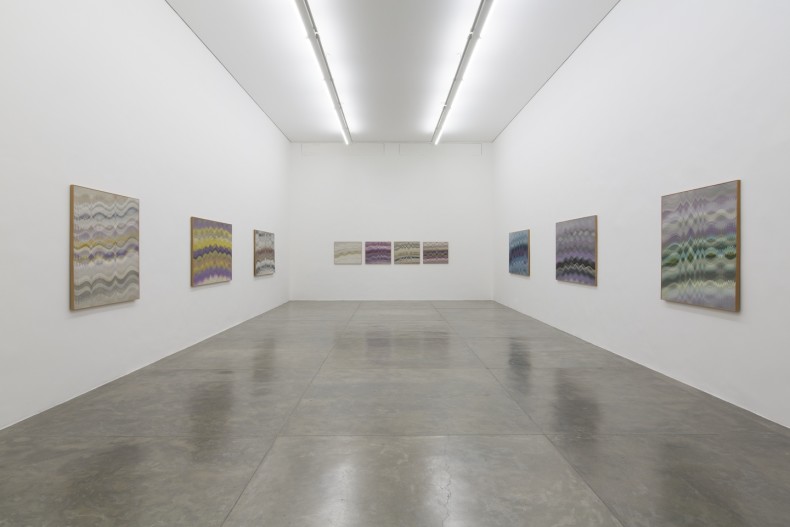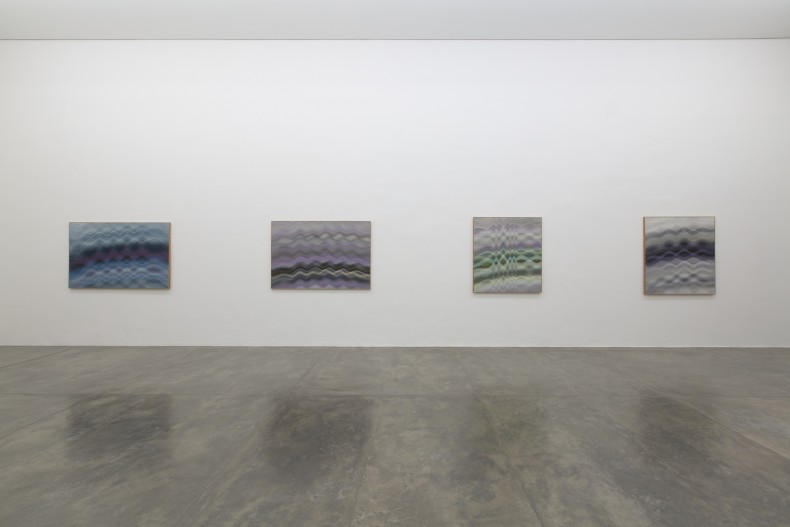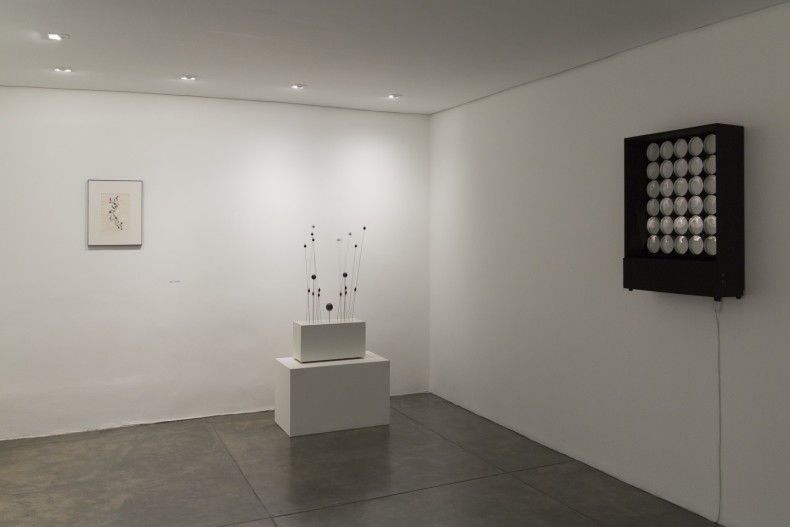Abraham Palatnik requires no introduction. A pioneer of geometric abstraction and kinetic art in Brazil, the artist will showcase his latest painting and relief output from the W and Relevo Progessivo series, in perspective with artwork by him and his early contemporaries like Amir Mavignier, Julio Le Parc, and Ivan Serpa. The exhibit Abraham Palatnik, curated by Fernando Cocchiarale, will be featured in Galeria Nara Roesler, São Paulo, from August 1 to September 26.
Cocchiarale worked from the premise put forth by Giulio Carlo Argan and Maurizio Fagiolo in Guida a la storia dell'arte: “During all periods of history, value judgments about artworks have been formulated more or less explicitly, but in each period they were formulated using different parameters. (...) For our culture, which is science-based and regards history as the science that studies human actions, the parameter for judgment is history. A piece of work is regarded as art when it has an importance to art history, and has contributed to the formation and development of an artistic culture. In sum: the judgment that recognizes artistic quality in a piece of work also recognizes its historicity.”
In other words, realizing the artistic quality of Palatnik means observing the processes that led his work to be recognized in his time, allowing it to be undisputed today as fundamental within the history of art in Brazil and the world. In the words of Cocchiarale, "the importance of Abraham Palatnik (and other Brazilian abstract-concrete artists who, like him, emerged in the post-war) is precisely built upon his undeniable contribution “to the formation and development of an artistic culture” in Brazil that is effectively modern. Such non-figurative turning point, vital to some of the future developments of Brazilian visual production, became a historical watershed between figurative modernism from the first half of the 19th century, and the departure represented by the emergence and consolidation of abstract and concrete art between 1948 and the 1960s."
Two aspects of Palatnik’s production are crucial to this comprehension: his pioneering choice of geometric abstraction, which spawned concrete art; and the kinetic research that landed him at the forefront of this movement, not only regionally, but internationally.
The choosing of geometry came as Palatnik and some of his contemporaries, like Ivan Serpa and Mavignier, appropriated Mario Pedrosa’s theories, which in turn incorporated ideas from Gestalt, the German psychology of form. To this current, the contents expressed in the work of art did not derive from the form’s similarity with nature’s contours, like in figurative art, but were the outcome of form in itself. This was the starting point to what would become one of the biggest references for Brazilian art in the entire world: concretism, of which Palatnik was a part from the beginning. The work of Ivan Serpa and Amir Mavignier provide a broader view of the concretist panorama in which Palatnik was inscribed.
Due to his hybrid background in arts and mechanical engineering, Palatnik was able to see what Brazilian art lacked at that point: the aesthetic ability of machines and contraptions developed with his own hands, like his Objetos Cinéticos (Kinetic Objects) and Aparelhos Cinecromáticos (Cinechromatic Devices), a means of transgressing the industrial component by endowing it with a playful, poetic characteristic. Julio Le Parc paired up with Palatnik in using motion in art, and is featured in the exhibit with Continuel-lumière avec 36 cylindres.
Palatnik’s current paintings and reliefs attain a formal delicacy that incorporates sensation, more than the simple notion of movement, into form. In these paintings, the canvas is divided into narrow, curvy lengthwise sections painted in alternating tones, following mathematical laws and creating a fluid effect, as if the medium itself were molded and moving. In the reliefs made from white paper, the effect of lightness is obtained by superimposing geometrical figures that project their shadows onto the medium, seeming to float towards the viewer.
Thus, as the curator puts it, "even though the exhibit focuses on Palatnik’s more recent work, (to be featured in the large hall on the gallery’s left wing), there are plans to showcase, in the two rooms leading into the hall, work by other artists from the period when Abraham’s production flourished into both abstraction and kineticism. This spatial configuration is intended to contextualize the pioneering character of his work in the first two rooms, where Palatnik’s early works are featured next to those of other artists who, like him, pioneered abstract art in Brazil and kinetic art internationally."
"Due to its scale and conciseness, it does not set out to be a historical exhibit (nor could it), but rather a show that possesses the minimal elements needed to establish the historical contribution of this great artist.” Thus, Galeria Nara Roesler goes on hosting exhibitions that complement its audience’s art history background, such as Artist Book and Films 1970-2013, which featured artist’s notebooks and films by Paulo Bruscky last year, and the exhibit of Athos Bulcão’s tile murals, shown in a gallery for the first time ever last month.
